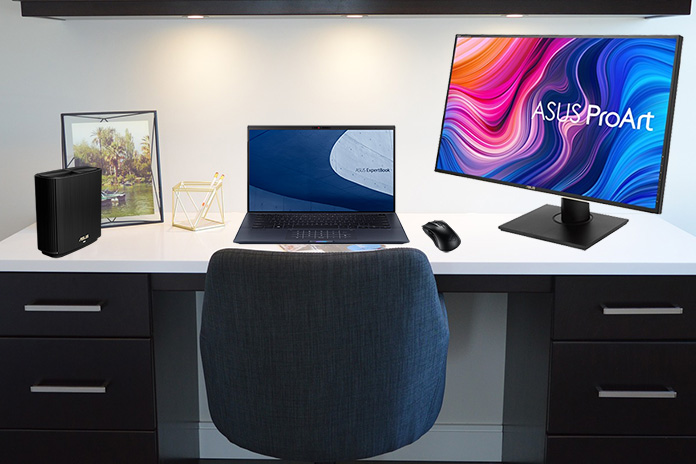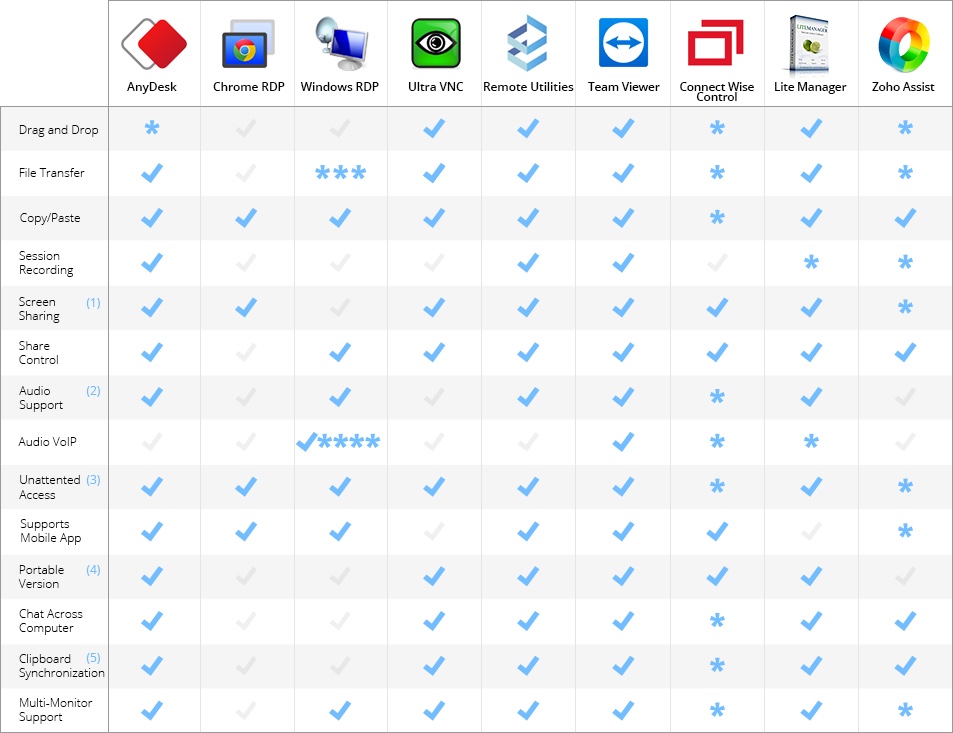- Anydesk Waiting For Image Forever
- Anydesk Waiting For Image No Monitor
- Anydesk No Longer Free
- Anydesk Connected Waiting For Image
- Anydesk Application
Fixed a rare crash which could occur in incoming sessions. In some situations (for example virtual machines), no image was displayed by the ddraw view. In this case, AnyDesk uses gdi now and displays an image. The standard distribution of AnyDesk did not start when a previously installed MSI version of AnyDesk was not uninstalled correctly. In the host's AnyDesk client go to: Settings - Display - Hardware Acceleration - DirectDraw. Reboot the system (You may turn off / unplug the monitor at this point).
1. Reeboot the remote machine
Most of the time, a remote computer will function completely fine without a reboot, but in case you’re managing a session where the remote host machine requires a reboot and you reboot through the standard method, you won’t be able to resume the session without user interaction. Thankfully, with AnyDesk you will able to reboot the machine remotely (the Remote Reboot button must be clicked). To find that button, select „Actions“ (the menu with the flash symbol) and then „Restart remote machine“.
2. Optimize your screen
Especially if you’re working on a remote PC for hours, you might want to adjust the view to fit your needs. With AnyDesk, various visual settings can be adjusted to bring in the feel of actually using your local computer instead of a remote one. In the „Display“ settings you can set the defaults and you will be presented with several options:
- Original size: ensures that the transmission window has the same resolution as the remote computer’s desktop. The transmission window may, however, be bigger than the AnyDesk window. In this case, the view will scroll automatically with the mouse movement.
- Optimize monitor usage (stretch): ensures that the transmission window adapts to your local AnyDesk window or (if in fullscreen) monitor. This will stretch the image if your monitor’s resolution is larger than that of the remote computer.
- Optimize display (shrink): this allows AnyDesk to automatically adjust the size to fit your local monitor if it is too small. But it will not stretch the image, if your monitor is larger.
- Start new sessions in fullscreen mode: your entire monitor will be automatically filled with the image of the remote desk during a session. This is extremely helpful, if you intend to use the remote computer only without switching between applications on your local PC and the remote destop.
3. Show remote cursor
When we work with someone on his remote computer we won´t be able to know what the other user is trying to show as his mouse pointer is not visible by default. So to see the remote cursor you need to manually enable it. After you connect to the remote computer click on the „Display“ menu (with the screen icon) and at „Visual Helpers“ select „Show remote cursor“. Now, not only your desktop’s cursor is visible but also that of the remote desktop. This allows the remote user to point at certain elements on the screen.
4. Switch sides
In a regular remote support session, you will connect with your client (host computer) to view his desktop. But in case you would like to show or present something to your client without having to close and open a new session the other way around, you can select „Switch sides“ from the “Actions” menu, allowing your partner to view and control your desktop.
5. Unattended access Hitron driver download for windows.
Setting up unattended access on a customer´s computer allows you to access their computer when the customer is not sitting in front of it, enabling you to provide unattended technical support at any time. Or if you wish to access your work computer from your laptop at home, this feature makes it possible. All you need to do is set a password in the “Security” tab of your work computer’s AnyDesk settings.
AnyDesk is super easy to use, but with the above tips, you should be able to really take advantage of its power – and make it feel like your remote computer is right in front of you!
With unattended remote access, users have the ability to set up a remote control session on a computer, tablet or mobile phone without needing someone in front of the remote device to accept the connection. By installing lightweight remote access software onto your devices, you can set up unattended access for various uses.
Whether you’re a professional looking to access files on-the-go or an IT manager looking for a way to streamline support tickets, unattended access can increase accessibility of your remote devices.
Selecting the Right Unattended Remote Access Solution
While there are several remote access software solutions available, AnyDesk has some of the best performance features on the market. When it comes to frame rate, latency, data transfer and frame size score, AnyDesk is ranked as one of the top performers in the space according to independent benchmark reports by PassMark Software and ScienceSoft.
AnyDesk’s remote access software offers many beneficial features like file transfer, remote printing, session reporting, customizable security controls and more. AnyDesk is also available as a mobile application so you don’t have to set up any software in order to use it. This is useful when the program is used to provide or receive assistance without using your device battery to keep it running in the background.
AnyDesk’s unattended access feature is one of the most used functionalities by users. Its benefits enable users like IT support to access customer devices any time, even if the customer is not around. This enables support teams to provide quick and efficient remote support as well as streamline company-wide security updates and installs.

Similarly, if you’re a professional who wants to access your work computer from your laptop at home, unattended access makes it possible. All you need to do is set a password in the “Security” tab of your work computer’s AnyDesk settings and you’re ready to work from home.


How To Set up Unattended Access With AnyDesk
1. Install AnyDesk on the Remote Device
You can download the latest version of AnyDesk on our website. Simply click on the “Download” button. Depending on your web browser, downloading will begin automatically or you will be prompted to select a course of action. AnyDesk is cross functional and available for Windows, ManOS, Linux, and other popular platforms.
2. Configure AnyDesk on the Remote Device

Next, you’ll want to set a computer name and password for the remote computer. All you need to do is set a password in the “Security” tab of the AnyDesk account. Additionally, you can add this remote computer to your address book (not available for all licenses).
3. Connect to the Remote Device
If a password is set on the remote computer, you can choose to log in automatically. Just connect and wait for the password dialog to appear.
Check “Log in automatically from now on” and enter the correct password. You will not be asked for the password anymore for future connections to the same machine. This feature does not save the password itself. Instead, if the password was entered correctly, the remote machine generates a specific token. This token is like a special key that can only be used by a single AnyDesk client. This means that there is no way to retrieve the password in clear text, even if someone has full access to your computer.

How to Keep Your AnyDesk Account Secure
AnyDesk has a variety of security features that ensure that your remote access connections are always encrypted and safe. However, there may be a time when you need to revoke permissions from once trusted devices or secure your account further by changing your password. Let’s walk through how you can revoke permissions to connect to your device on the AnyDesk software from your PC and set up a secure password that makes it difficult for even your most trusted friends and colleagues to guess.
Anydesk Waiting For Image Forever
How to Revoke the Permission to Connect to Your PC
To revoke permissions for connecting to your PC, there are two options:
Anydesk Waiting For Image No Monitor
- Press the “Clear All Tokens” Button
You can disable this feature entirely by checking the option in the “Security” tab. Please Note: The already existing tokens will not be cleared by doing this, but no new tokens can be generated. - Change the Password
Even changing the password to the same password again invalidates all tokens. This is useful if you entered your password on another computer, but the user there does not know the actual password.
Anydesk No Longer Free
Improving Your AnyDesk Password
Anydesk Connected Waiting For Image
To ensure your password is airtight, make sure your selection is secure with these tips. Anyone who knows the password and your AnyDesk ID has full access to your computer. Here are a few ideas to consider when creating a password:
- The best and most secure passwords are long, unique and random. A password with more than 12 characters is highly recommended.
- Never use the same password across different online services, applications or accounts. If one of them is compromised, they all are.
- Change your password regularly to make it more difficult for hackers to crack your code. While this is a rare occurrence, it’s always a good idea to change your password in a regular cadence.
- You can use a password manager to make this more convenient and ensure the highest level of security.
Anydesk Application
The versatility of AnyDesk makes your daily routine easy. Whether you are at home or at the office, our flexible product plans will get you the features you want for a price you’ll love. Get started with AnyDesk today.

Comments are closed.